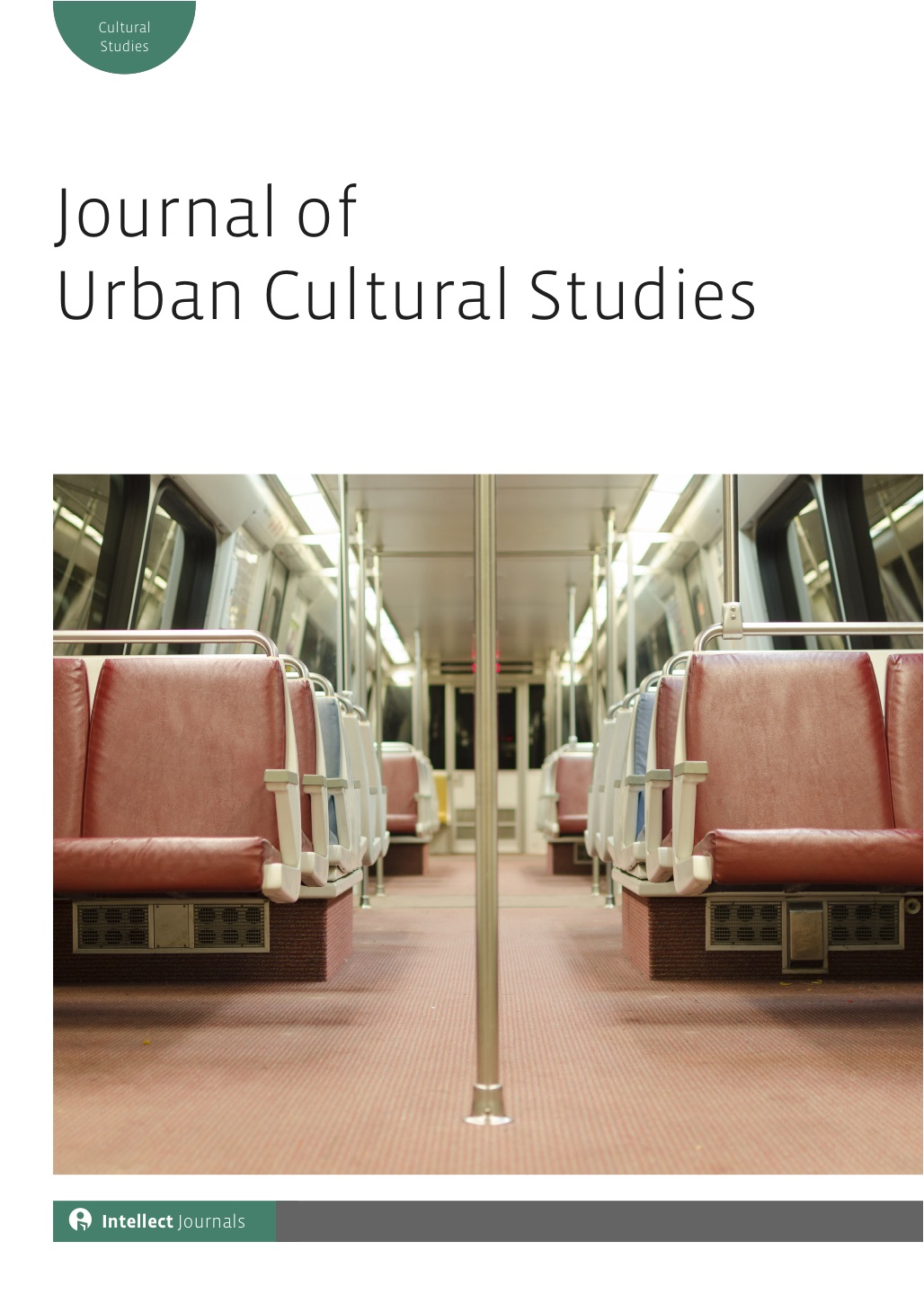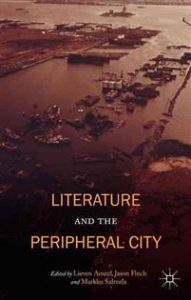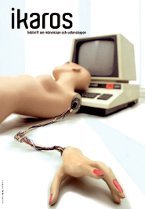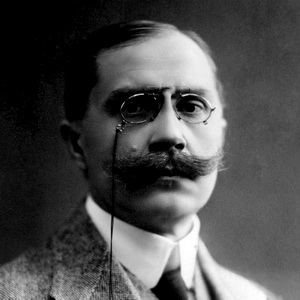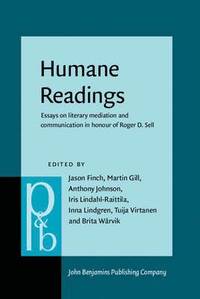- Postprint of 2016 chapter: ‘Modern London: 1820–2020’, in The Palgrave Handbook of Literature and the City, edited by Jeremy Tambling. London: Palgrave Macmillan, 127–46. Publisher’s page.
- Postprint of 2016 chapter: ‘Modern Urban Theory and the Study of Literature’, in The Palgrave Handbook of Literature and the City, edited by Jeremy Tambling. London: Palgrave Macmillan, 27–44. Publisher’s page. NOTE: as of 30 January 2019 this chapter has had 2323 downloads, compared to 543 as the most for any other chapter in the book.
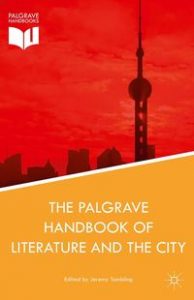
- Academia.edu analytics on 32 items from 2005-16
A bit of a ragbag. As well as publications (titles in bold) on this page including edited and single-authored volumes, and journal articles, are teaching materials, popularizing articles and doctoral coursework.
Feel free to explore!
If there are any publications of mine that you can’t find in full text format here, please contact me and, if possible, I will share a copy with you.
| E.M. Forster and English Place: A Literary Topography
|
||||||
| ‘Grotland Explored: The Fleeting Urban Imaginaries of Post-War Inner West London‘
|
||||||
| Literature and the Peripheral City (edited by Lieven Ameel, Jason Finch and Markku Salmela). Basingstoke: Palgrave Macmillan, 2015
|
||||||
| NEW BOOK INFORMATION Deep Locational Criticism: Imaginative Place in Literary Research and Teaching
Flyer for Deep Locational Criticism (2016). A lively series of spatial turns in literary studies since the 1990s give rise to this engaged and practical book, devoted to the question of how to teach and study the relationship between all sorts of literature and all sorts of location. Among the many concrete examples explored are texts created between the early seventeenth and the early twenty-first centu-ries, in genres ranging from stage drama and lyric poetry to television, by way of several studies of fiction definable in a broad way as realist. Writers and thinkers discussed include Michel de Certeau, Edward Casey, Gwendolyn Brooks, Christina Rossetti, Dickens, J. Hillis Miller, Lynne Reid Banks, Heidegger, Shakespeare, Thomas Middleton, Thomas Dekker, Stephen C. Levinson, Bernard Malamud, E.M. Forster, Thomas Burke and Samuel Beckett. The book is underpinned by the philosophical topology of Jeff Malpas, who insists that hu-man life is necessarily and primarily located. It is aimed at students and teachers of literary place at all university levels.
|
||||||
| ‘How Cultural? How Material? Reading the Slums of London, 1820-1850’. In Imagining Spaces and Places, ed. Saija Isomaa et al. Newcastle upon Tyne: Cambridge Scholars, 2013. 85-106. ISBN: 9781443849562.
Published text of book chapter
|
||||||
| Metropolitan Writing sessions 4 and 5
Teaching material developed for the option course ‘Metropolitan Writing’ at the University of Turku’s Comparative Literature department, autumn 2015 |
||||||
| Kan det finnas urbana vildmärker?
(‘Can there be urban wildernesses?’) Text of article for a broader audience, translated into Swedish by Jennie Öhman
|
||||||
| Eduard Vilde’s Modernisms and Modernities: Moving Towards an Urban Estonia
|
||||||
| City of Wild Capitalism: Dos Passos’s New York
Lecture presentation from ‘Metropolitan Writing’ course |
||||||
| Urban Visions, 1860-1940: Zola and Paris
Lecture presentation from ‘Metropolitan Writing’ course |
||||||
| Making One’s Way in 1830’s London: Early Dickens
Lecture presentation from ‘Metropolitan Writing’ course |
||||||
| ‘In Town’ with the Seriocomic Dickens: Literary Studies and the Urban Humanities
Lecture presenting work on archaeology and slum writing of early Victorian London (2015) |
||||||
| ‘Genuine and Distorted Communication in Autobiographical Writing: E. M. Forster’s “West Hackhurst” and Its Contexts‘. In Sell, Roger D., Adam Borch and Inna Lindgren (eds). The Ethics of Literary Communication: Genuineness, Directness, Indirectness. Amsterdam: John Benjamins, 2013. 61-80
Published text of book chapter |
||||||
| ‘Addressivity and Literary History: The Case of William Plomer‘. In Sell, Roger D. (ed.). Literary Community-Making: The Dialogicality of English Texts from the Seventeenth Century to the Present. Amsterdam: John Benjamins, 2012. 161-84.
Published text of book chapter |
||||||
| ‘The Other Time: The Victorian Past in William Plomer’s Double Lives’. In Transforming Otherness, eds Finch and Nynäs. 2011. 143-16.7.
Published text of book chapter |
||||||
| ‘Introduction’ (with Peter Nynäs). In Transforming Otherness, eds Jason Finch and Peter Nynäs. New Brunswick, NJ: Transaction, 2011. 1-8. ISBN: 9781412814966.
Introduction to co-edited book. |
||||||
| ‘Individual versus Collective? Layers of Memory in Forster’s “West Hackhurst”’. In The Capricious Thread: Memory and the Modernist Text, ed. Teresa Prudente. Alessandria: Edizioni Dell’Orso, 2012. ISBN: 9788862742894. 71-87.
Published text of book chapter |
||||||
| ‘E.M. Forster and English Place: A Literary Topography (Lectio Praecursoria)’. Neophilologische Mitteilungen 82 (2012): 229-33. ISSN: 00283754.
Introductory lecture on my doctoral research published as an article in the oldest Finnish philological journal. |
||||||
| ‘“Swelling Here, Shrinking There”: Deixis of Place in Chapter 1 of A Passage to India‘. In From Utterance to Uttering and Vice Versa: Multidisciplinary Views on Deixis, eds Daniele Monticelli, Renate Pajusalu and Anu Treikelder. Tartu: Tartu University Press, 2005. 259-70. ISBN: 9789949112708.
Published text of book chapter |
||||||
| Literary Second Cities: Full Conference Abstract | ||||||
| HLCN 2 Literary Second Cities, Åbo Akademi University, 20-21 August 2015
Conference which led to the book Literary Second Cities. |
||||||
| The latest from my blog, The Postdoc Chronicles
Blog regularly updated 2012-16 during my Academy of Finland postdoctoral research period and immediately afterwards. |
||||||
| Beckett, Place and Toponym (work in progress)
Led to the article ‘Beckett’s Manywheres‘ in Literary Geographies 1.1. Abstract of article: Linguistic accounts of indexicality, ecocriticism and the place philosophy of Jeff Malpas could all be used in getting closer to a locational or literary geographic understanding of Beckett’s fiction and drama. Malpas considers human being to be fundamentally placed and also to be grounded by its happening in different actual places. This article is an experiment assessing what happens when such a view is applied to Beckett. Beckett’s writing often seems an epitome of anti-place or no-place literature, as exemplified by the stage directions at the beginnings of his post-war plays. Murphy (1938) is by contrast very specifically located in particular districts of London identified by toponyms, with the city as a whole in this novel functioning in the manner of a game board. Readings of Murphy have identified an opposition between a big world of maps and place names and a little world within a room or a person’s head, but the relationship between big and little could be reinterpreted using a poetics of scale in which they are related to one another on a scale. The seemingly placeless Endgame is in fact radically multiple in locational terms, containing many layers, in a way that contrasts with ‘realist’ fiction contemporary with it. The locational complexities of Beckett’s writing help ‘realist’ fiction’s geographic aspects to be understood, rather than standing in any absolute opposition with that sort of writing.
|
||||||
| Grotland: Writing the Last Days of the ‘London Slum’: 1940-65
Presentation that led to article in Journal of Urban Cultural Studies. |
||||||
| The Limits of London in Barnaby Rudge
Presentation at the Literary London conference, 2013 |
||||||
| ‘Forster’s Masters’ (doctoral coursework, 2006)
Long early PhD studies essay on writers who influenced E.M. Forster, taking one novel by each and investigating space and place aspects of that. Unpublished apart from here. |
||||||
Transforming Otherness, edited by Jason Finch and Peter Nynäs (New Brunswick, NJ: Transaction, 2011)
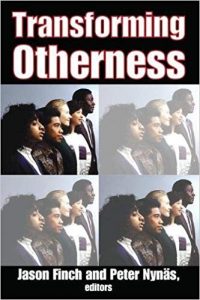 |
||||||
| Humane Readings: Essays on Literary Mediation and Communication in Honour of Roger D. Sell, edited by Jason Finch, Martin Gill, Anthony Johnson, Iris Lindahl-Raittila, Inna Lindgren, Tuija Virtanen and Brita Wårvik (2009)
|


